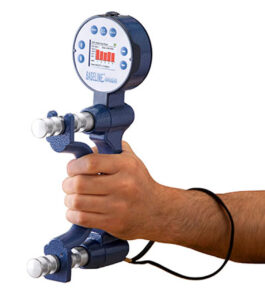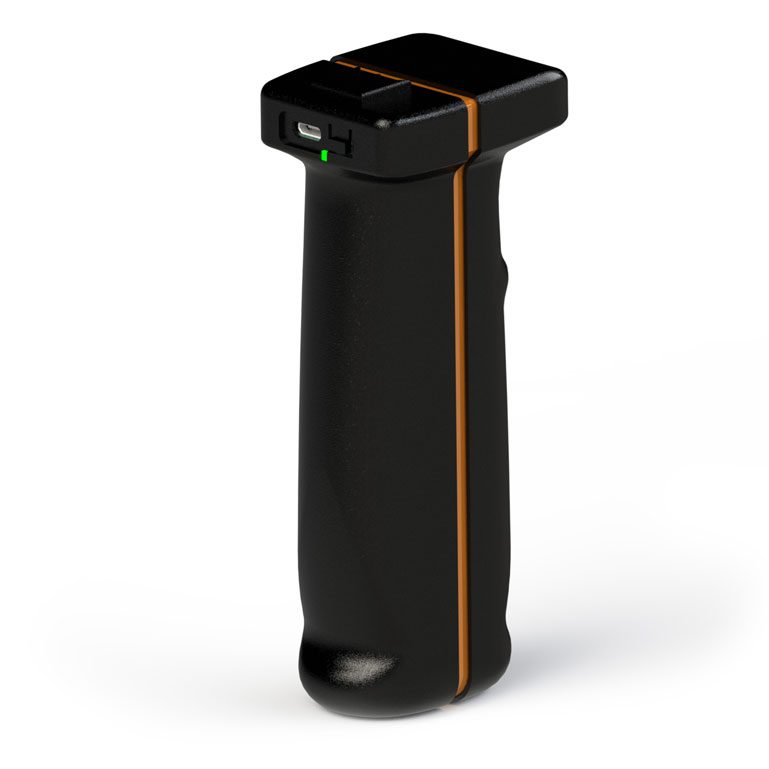This article opens up the world of handshake dynamometers and explores their importance, uses and differences. In addition, we offer an overview of their correct use and how to choose a suitable dynamometer according to individual needs. Are you considering bringing the latest generation handshake dynamometer to your clinic? Or you are interested in the concept of measuring hand strength, but the term "dynamometer" seems like a mystery. If you are a physical therapist or a hand surgeon, you have come to the right place to discover the secrets of handshake dynamometers.
Handshake Dynamometers: An Important Tool for Measuring Strength
Handshake dynamometers are special instruments that measure the strength of hand and finger muscles during a handshake. These tools are important for many purposes, including medicine, physical therapy, research, and sports and health in general. Dynamometers make it possible to objectively measure arm strength, monitor progress and tailor rehabilitation programs to individual needs.
This ingenious tool uses hydraulic or electronic load cell technology to measure force. After adjusting the handshake position, the user grasps the handle and applies pressure. On hydraulic models, the peak reader will retain the needle's highest reading until it is reset, while digital variants will display results automatically.
Why Should You Consider a Handshake Dynamometer? Handshake dynamometers are essential for a variety of medical professionals. If you are a certified hand therapist, occupational therapist, or dedicated physical therapist monitoring patient progress, this tool is a great tool for measuring strength gains during treatment. Hand surgeons use it to measure a patient's handshake before and after surgery. It also plays a key role in independent medical examinations to determine a patient's readiness to return to work. Handshake dynamometers are invaluable tools for assessing hand functionality.
Versatile Applications and Significance in Various Fields
Handshake dynamometers are used in several important areas:
- Medical Diagnostics: Dynamometers are indispensable for assessing the strength of hand and upper limb muscles. They help identify weaknesses, injuries or diseases such as carpal tunnel syndrome and rheumatic diseases.
- Physiotherapy: Physiotherapists use dynamometers during rehabilitation to monitor patients' progress and adjust exercises as recovery progresses. These tools help to effectively strengthen the muscles and improve the functionality of the hand.
- Sports Science and Coaches: Dynamometers are valuable tools for measuring strength and arm functionality in athletes. Trainers can monitor training processes and optimize training plans based on individual needs.
Use of handshake dynamometers in research
- Study 1: Hand Strength Predictive Characteristic: The comprehensive study included 139 participants from 691 different countries. The study found that hand grip strength was inversely associated with all-cause, cardiovascular and non-cardiovascular mortality, as well as myocardial infarction and stroke. This suggests that measuring hand grip strength can assess a patient's risk of cardiovascular disease and other conditions. The study found that grip strength was a better predictor of cardiovascular mortality than systolic blood pressure.
- Study 2: Handshake and health assessment in adolescents: A study of 368 primary school students found that normalized handshake strength was a predictor of maintaining and improving health in adolescents, highlighting its predictive value.
- Study 3: Predicting Postoperative Complications of Hip Fracture: 83 patients who underwent hip fracture surgery participated in the study. A study found that hand strength measured with a digital handshake dynamometer was a more effective predictor of intensive care unit (ICU) admission than traditional risk factors.
Characteristics and Selection of Different Dynamometers
A diverse selection of dynamometers allows you to find the most suitable tool according to your need:
-
- Baseline Dynamometers: These dynamometers are known for their accuracy and versatility. There are different models with different tests and functions according to the needs of users. There are 2 more common digital dynamometers available at Medpoint. Below is the difference between them:Baseline, BIMS Digital 5-Position Hand Dynamometer, For Clinics
- Max Strength Test - Shows real-time strength readings and maximum value. The test result is not saved.
- Quick Test - Shows real-time strength readings and maximum value. The result is saved. Timing can be switched on/off.
- General Strength Tests (GST) - Three (3) strength tests are performed in the same grip position. Calculates and stores peak readings for mean, standard deviation, and COV (coefficient of variation). Timing can be switched on/off.
Baseline BIMS Digital 5-Position Hand Dynamometer, Delux Model
- Max Strength Test - Shows real-time strength readings and maximum value. The test result is not saved.
- Quick Test - Shows real-time strength readings and maximum value. The result is saved. Time switchable.
- General Strength Tests (GST) - Three (3) strength tests are performed in the same grip position. Calculates and stores peak readings for mean, standard deviation, and COV (coefficient of variation). Timing can be switched on/off.
- Rapid Alternation Test (RET) - Six (6) strength tests (alternating arms) are performed in the same grip position. Peak readings, standard deviation and COV are recorded. Timing can be switched on/off.
- Modified Maximum Voluntary Effort Test (MMVE) - Ten (10) strength trials are performed, alternating arms, 2 trials in each grip position. Peak readings are recorded in each position. Timing can be switched on/off.
- Maximal Voluntary Exertion (MVE) Test – Fifteen (15) strength tests are performed per arm, three in each grip position. Peak readings, mean, standard deviation and COV are recorded. Timing can be switched on/off.
- Fatigue test (work test) - One longer test is performed. The results are used to compare strength (total work done) over 2 or more user-defined time periods. Segment work readings are recorded. Time measurement on/off switch
- Electronic vs Mechanical: Electronic dynamometers use digital technology, ensuring a more accurate and repeatable measurement. Mechanical dynamometers may be more affordable. Why Prefer Digital Handshake Dynamometer? Digital handshake dynamometers offer better accuracy and eliminate concerns about hydraulic fluid leakage. For example, Kinvent's smart digital handshake dynamometer includes automatic calculations, graphics capabilities, and access to normative data. This increases efficiency, allowing you to spend more quality time with patients.
- Bluetooth Compatibility: Some dynamometers are equipped with Bluetooth connectivity, allowing results to be transmitted to smart devices or computers.
Medpoint represents the most innovative dynamometers from Kinvent in Estonia. Kinvent dynamometers combine precision, versatility, user-friendliness and technological innovation, making them an excellent choice for medical practitioners, physiotherapists and sports scientists alike.
- Baseline Dynamometers: These dynamometers are known for their accuracy and versatility. There are different models with different tests and functions according to the needs of users. There are 2 more common digital dynamometers available at Medpoint. Below is the difference between them:Baseline, BIMS Digital 5-Position Hand Dynamometer, For Clinics
The latest Kinvent K-Grip dynamometer for measuring grip strength in various situations: strength measurement (e.g. grip test), exercises, games, rehabilitation (hands and upper limbs, athlete's nervous lystem fatigue). The K-FORCE app provides real-time biofeedback to monitor patient or athlete progress. the newer device supports the new Bluetooth 5.0, which ensures interference-free operation in a place with several Bluetooth devices. All kinvent dynamometers are compatible with a smart device that
KForce Grip hand isometric dynamometer
KForce Grip is used to measure grip strength in a variety of situations: strength test (eg grip test), exercise, games, rehabilitation (fatigue of the nervous system of the arms and upper limbs, athlete). K-FORCE application. provides real-time biofeedback to monitor patient or athlete progress.
Correct use and careful maintenance
Correct use of dynamometers ensures accurate results. The recording of the test results can be done in the dynamometer itself or they can be transferred to a computer. Maintaining and calibrating dynamometers according to the manufacturer's instructions ensures long-term accuracy and reliability.
Summary: Choose the right dynamometer for best results
Handshake dynamometers are essential tools in medicine, physical therapy and sports science. Their precise measurements allow for an objective assessment of hand strength and functionality, and for tailoring treatments and exercises to individual needs. Choosing the right dynamometer can ensure the best results for both patients and athletes. A carefully selected dynamometer unlocks the magic of arm strength measurement, leading to a healthy and efficient recovery.





